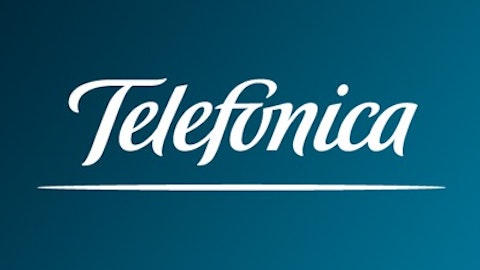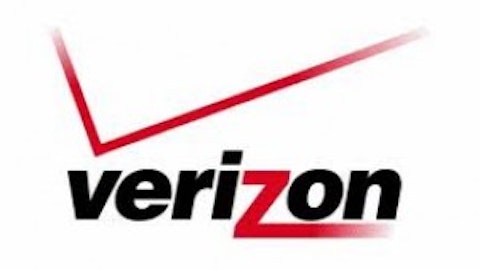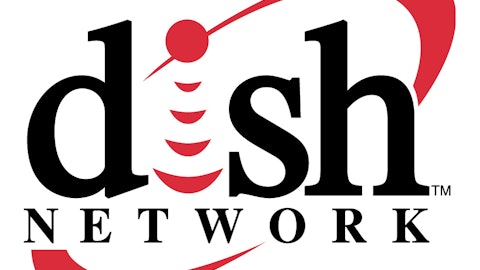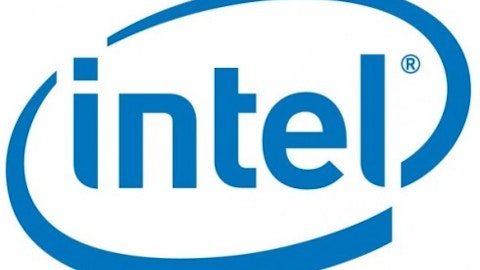Competition
Verizon is one of three U.S. telecommunications companies, and is the leading mobile phone service provider with more than 100 million subscribers. It faces competition from AT&T, which is another company interested in entering the Canadian market. AT&T Inc. (NYSE:T) recently launched 4G LTE in Florence-Muscle Shoals and is the largest, in terms of market cap, in the telecommunications industry, while Sprint Nextel Corporation (NYSE:S) is the smallest. Therefore, Verizon is sandwiched in between, although not too far behind, AT&T.
Sprint Nextel Corporation (NYSE:S) has been in the news in the recent past regarding bids from Japanese carrier, SoftBank, and Dish Network. Sprint Nextel has also been in a bidding war with Dish Network, in the chase to acquire another U.S. carrier, Clearwire. Sprint was counting on the proceeds from its prospective buyer to boost its cash positions as well as avail funds to acquire Clearwire.
However, following Dish’s withdrawal from the bidding war to acquire Sprint Nextel, it now means that it is up to SoftBank to complete the acquisition. Following Dish Network’s decision, Kevin Smithen, an analyst from Macquarie, downgraded Sprint from “buy” to “neutral,” citing impending spending that could result in negative cash flows. So, Sprint has quite a number of problems at the moment, and, therefore, may not be a serious threat to Verizon for now.
Performance and valuation
Verizon’s most recent quarterly earnings grew by 15.8% year-over-year, which trumps AT&T’s 3.2%, while Sprint Nextel reported a loss. In terms of margins, Verizon is the most impressive with 61% gross margin, compared to AT&T’s 57% and Sprint Nextel’s 42%. Its operating margins are equally superior, standing at 13% for the trailing 12-months (TTM), compared to AT&T’s 10%, while Sprint Nextel lags behind with just 2%.
However, AT&T is more profitable with EPS of $1.29 TTM, compared to Verizon’s $0.40 EPS, while Sprint Nextel stands at a loss of $1.37 per share. Nonetheless, all the three companies are below the industry average of $1.75 EPS.
Assessing the P/E ratio indicates that Verizon is the most expensive, but when we factor in the estimated earnings growth rate for the next five years, Verizon is actually the cheapest among the three companies. Verizon’s P/E ratio stands at 128.02 times, while its PEG ratio TTM is pegged at 1.76 times. This compares to AT&T’s 27.73 and 2.30, respectively.
The bottom line
Verizon’s attempt to acquire Wind Mobile may seem like a lucrative opportunity, but apparently, there will not be any immediate benefits. However, if the company manages to penetrate some of its products and services into the Canadian market via Wind Mobile, then there could be a huge upside, especially considering the fact that only 27 million Canadians are subscribed to wireless communications services. As the market grows, Verizon could position itself well to capitalize on that. Otherwise, the company’s fundamentals look very strong, as the stock is not as expensive as it seems.
Want to get in on the smartphone phenomenon? Truth be told, one company sits at the crossroads of smartphone technology as we know it. It’s not Nokia… or Verizon… or even Apple! In fact, you’ve probably never even heard of it! But it stands to reap massive profits NO MATTER WHO ultimately wins the smartphone war.
The article Verizon Must Think Long Term on Wind Mobile originally appeared on Fool.com.
Nicholas Kitonyi has no position in any stocks mentioned. The Motley Fool has no position in any of the stocks mentioned. Nicholas is a member of The Motley Fool Blog Network — entries represent the personal opinion of the blogger and are not formally edited.
Copyright © 1995 – 2013 The Motley Fool, LLC. All rights reserved. The Motley Fool has a disclosure policy.




